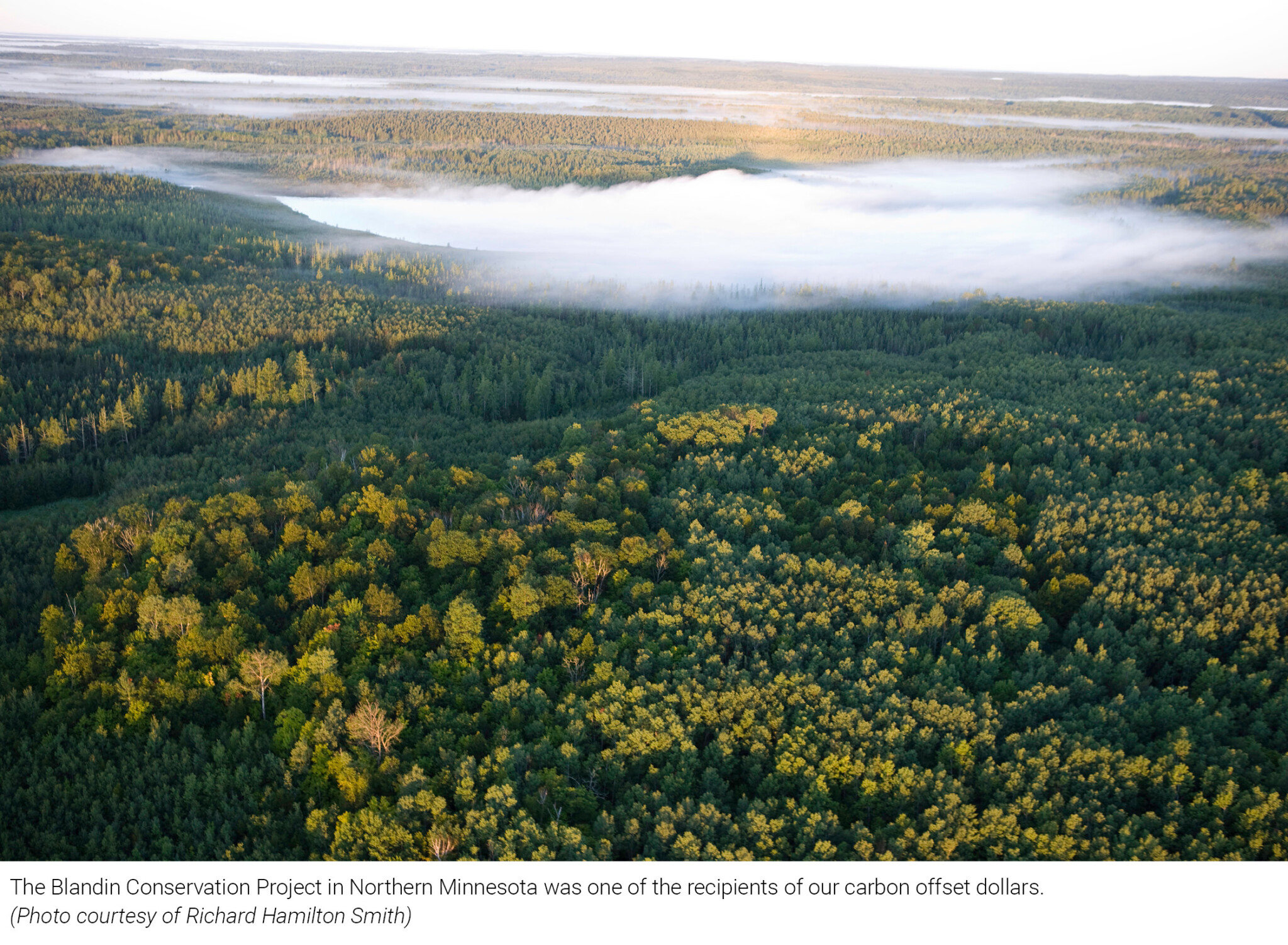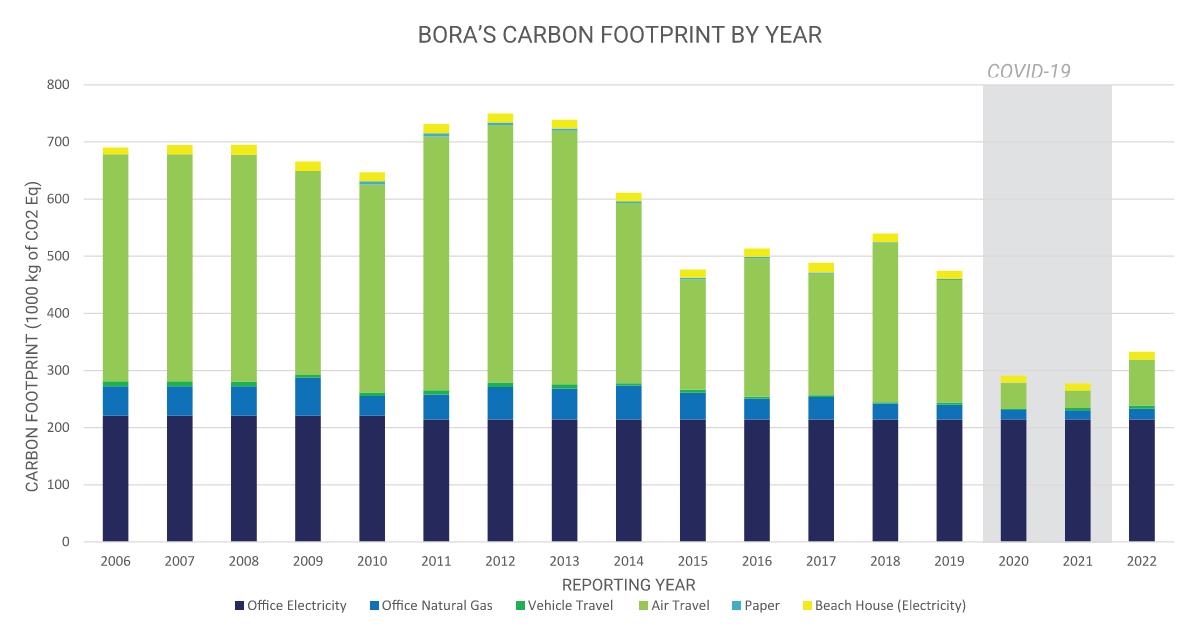



04.04.23
Bora achieves 50% reduction in operational carbon emissions and has offset 100% of its carbon footprint since 2006.
As part of our commitment to carbon, equity and health, Bora has purchased offsets for its annual unavoidable emissions associated with the firm for 2022. Our current carbon tracking and offset program covers air and car travel; office electricity, natural gas, and paper use; and electricity for the Bora Beach House.
Since Bora first started tracking its carbon footprint in 2006, we have managed to cut our annual numbers in half from approximately 1,500,000 to 750,000 pounds; this has in turn been offset by the purchase of emissions offsets. As part of the 2015 Paris Agreement on climate change, the U.S. committed to an emission reduction of 17% by 2020–and an additional 9-11% by 2025–over 2005 levels. Bora’s 50% carbon reduction from 2006 is more than 20% ahead of the U.S.’s 2025 target.
How do emissions offsets work?
Contributing to earth-healthy efforts gives back to the earth as a way to “offset” the unavoidable emissions we expend. For the year 2022, Bora offset its office electricity through participation in an optional Pacific Power utility program at our previous office known as Blue Sky Renewable Energy. We chose to purchase the remainder of our offsets through the Bonneville Environmental Foundation (BEF), which invests in forest conservation and restoration projects in Minnesota and South America.
The graph to the left shows the overall downward trajectory of Bora’s carbon footprint since 2006. It should be noted that emission levels were substantially lower in 2020-21 because of work from home and limited travel policies, and while emissions rose in 2022, they did not reach pre-COVID levels. This was in large part due to the adoption of new policies around video communication to intentionally cut down on unnecessary travel.
Looking forward to 2023, the unavoidable emission picture will be substantially improved by Volta, our new LEED Platinum office. The reliance on natural gas will be eliminated through our all-electric building design, while new dedicated rooftop solar PV panels on the adjacent building will provide electricity during working hours. As we continue to shrink our carbon footprint, we are reminded that with proper tracking, proactive research, and ongoing advocacy, we can all do our part in treading lighter on our planet.